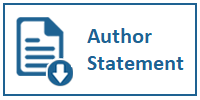Analisis Penerimaan Pengguna Garda Sumber Pembelajaran Terbuka Indonesia (Garsupati) Menggunakan Model Unified Theory Of Acceptance And Use Of Technology (UTAUT)
DOI:
https://doi.org/10.31937/si.v10i1.1056Abstract
The purpose of this research is to know how the user acceptance to Garsupati system so that system development feasible executed. One approach to the theory of acceptance and use of a technology that is Unified Theory Of Acceptance And Use Of Technology (UTAUT). UTAUT is one of the technology acceptance models developed by Vankatesh, et al. (2003) by combining eight previous technology acceptance theories. UTAUT has four main constructs: 1) performance expectancy, 2) effort expectancy, 3) social influence, and 4) facilitating conditions. This research will further explain about the relation of factors influencing acceptance and usage of Garsupati system using UTAUT model. Data were obtained by distributing questionnaires to students and interviews with lecturers. The sample size in this study amounted to 394 Undiksha students, analyzed using multiple linear regression using SPSS software. The results of this study indicate that (1) performance expectation, business expectation, social factor have positive effect to interest of utilization of Garsupati system (2) facility factor and interest of utilization have positive effect to user behavior.
Keywords: OER, Garsupati, UTAUT
Downloads
Downloads
Published
How to Cite
Issue
Section
License
Authors retain copyright and grant the journal right of first publication with the work simultaneously licensed under a Creative Commons Attribution-ShareAlike International License (CC-BY-SA 4.0) that allows others to share the work with an acknowledgement of the work's authorship and initial publication in this journal.
Authors are able to enter into separate, additional contractual arrangements for the non-exclusive distribution of the journal's published version of the work (e.g., post it to an institutional repository or publish it in a book), with an acknowledgement of its initial publication in this journal.
Copyright without Restrictions
The journal allows the author(s) to hold the copyright without restrictions and will retain publishing rights without restrictions.
The submitted papers are assumed to contain no proprietary material unprotected by patent or patent application; responsibility for technical content and for protection of proprietary material rests solely with the author(s) and their organizations and is not the responsibility of the ULTIMA InfoSys or its Editorial Staff. The main (first/corresponding) author is responsible for ensuring that the article has been seen and approved by all the other authors. It is the responsibility of the author to obtain all necessary copyright release permissions for the use of any copyrighted materials in the manuscript prior to the submission.















